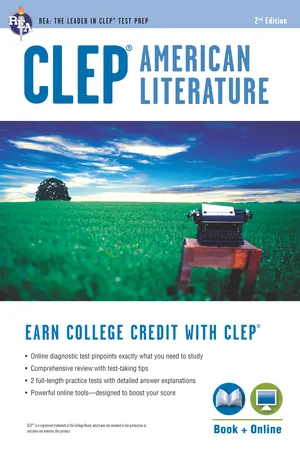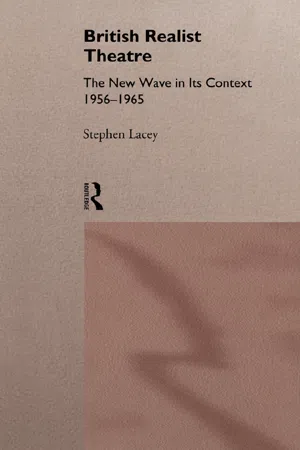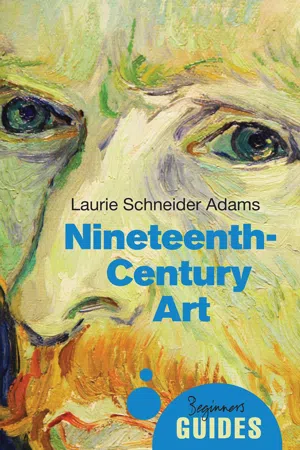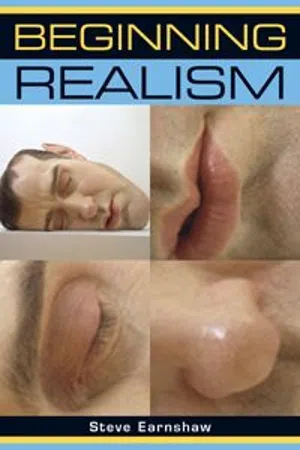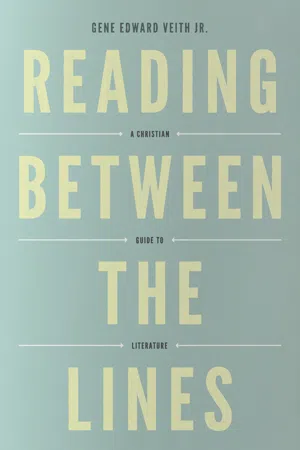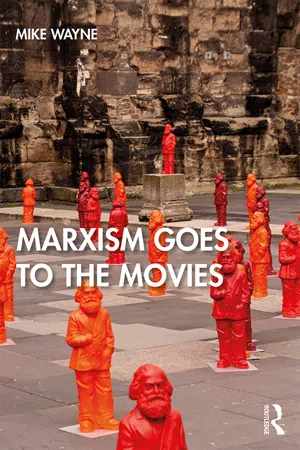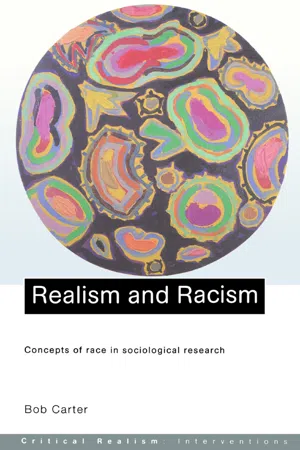Literature
Social Realism Literature
Social realism literature is a literary movement that emerged in the 19th century, focusing on the realistic portrayal of the lives of ordinary people, particularly those from lower socioeconomic classes. It often addresses social and political issues, aiming to expose the harsh realities of society. Authors use this genre to critique societal injustices and advocate for social change through their works.
Written by Perlego with AI-assistance
Related key terms
10 Key excerpts on "Social Realism Literature"
- eBook - ePub
- G. R. Thompson(Author)
- 2011(Publication Date)
- Wiley-Blackwell(Publisher)
Chapter 2 Of Realism and Reality Definitions and ContextsAs a literary term, realism normally refers to a theory and practice of fiction in which the artistic goal is to portray “life as it is” – rather than intensified or as it should be – and in simple direct language rather than striving for striking metaphors and indulging in rhetorical flourishes. The elevated subject matter of classic tragedy, or the poetic elements of optative romanticism, or the sentimental aspects of domestic novels and romances, or the hair-raising events of gothic romances were to be downplayed or avoided in favor of the everyday, average, prosaic aspects of life.Realism in this sense was especially prominent in France, England, the United States, and Russia from about the mid-nineteenth century to the 1930s and 1940s (and beyond). But there are realistic, mimetic elements in works written centuries before: in the Iliad and the Odyssey (c. eighth century bc), in the plays of Sophocles (496–406 BC), in Boccaccio's Decameron tales (1351–1353) and Chaucer's Canterbury Tales (c. 1387–1400), in the plays of Shakespeare (1564–1616) and other Renaissance dramatists. Don Quixote (Part I, 1605; Part II, 1615) presents a hybrid form of a romance and novel in which the interplay of worldviews is centrally informed by the mixture of realism with idealized romanticism. Many consider this seventeenth-century work the cornerstone of the modern novel.In the English-speaking world, literary historians generally point to the principal eighteenth-century British novelists as anticipating the nineteenth century in the development of modern realism. In American literature, the primary meaning of realism indicates a period: the historical era from about a decade after the American Civil War to a decade or two after World War I.1 But literary realism, even when confined to a historical period, is not a single undiversified idea or theoretical program or movement. In both Britain and America, major fictional forms partaking of both realism and romance included the domestic novel , the novel of manners , and the sentimental novel . In America there was an important, predominantly realist, movement toward regionalism , within which broad rubric a form called local color is sometimes distinguished. Both centrally involve a forceful vernacular style (idiomatic spoken language), often in dialect (regional or ethnic idiom). In addition, we can identify, at the minimum, several forms of realist theory and practice in Europe and America: objective realism , compassionate realism , benevolent realism , and sentimental realism . There is also a distinction to be made between intense “social reformist” realism and “quiet” realism. Variations on realism and anti-romance are also in tension with, or in complementary relation to, impressionism and expressionism and most especially naturalism .2 - eBook - ePub
- Jacob Stratman(Author)
- 2016(Publication Date)
- Research & Education Association(Publisher)
Chapter 4 Realism and Naturalism (1865–1910) REALISMI am making a slight change to the dates that the College Board (creators of the CLEP tests) states in its literature. Some scholars believe that realism as a literary movement began closer to 1870, but many more scholars point to the beginning of the Civil War as the beginning of American literary realism. Bullets, bloodshed, and brotherly bickering ushered in a reality that reacted strongly to the idyllic existence American romanticism painted. Then, after the battles ended, America began to grow and to expand its urban areas at the expense of its rural areas. The Industrial Revolution and increased European immigration caused a boom in urban populations. Post–Civil War America found itself in an existence of disillusionment and cynicism. Major technological breakthroughs also occurred at the end of the nineteenth century: the invention of the telephone, the completion of the transcontinental railroad, and, of course, the introduction of the automobile. So literary realism is the label we give to those works that attempt to portray life as it actually is and not simply as the writer wishes (the latter being idealism). The brief historical information just mentioned is important because those incidents influenced writers who focused their plots and characters on the very immediate happenings of people in particular cultural moments. Realism is very interested in the mundane episodes of middle-class life; therefore, realist novels tended to lean towards social reform. Also, writers took it upon themselves to critically comment on America’s politics, economics, industry, and social issues, as well as gender, class, and race issues.NaturalismLiterary naturalism is said to be a product of scientific determinism. Here’s a simple definition: You are controlled by your environment. There is no hope for you. Dreams come and dreams go. You are controlled by your gender, race, socioeconomic standing, and ethnicity. There is a glass ceiling and you will hit it every time you venture beyond your status. Depressing, huh? Yes, it is. There is more to the literary movement than that, of course. Naturalism was greatly influenced by the work of Charles Darwin, Isaac Newton, Karl Marx, and Emile Zola, and other naturalists who posited that humans are not that different from animals in that they merely respond to natural and environmental forces without fully understanding the forces or their reactions to them. What is also important about naturalist fiction is that the author and the narrator are amoral in their depictions of the characters and the plot: they do not judge or editorialize; they merely observe. - eBook - ePub
- Raymond Williams(Author)
- 2013(Publication Date)
- Parthian Books(Publisher)
7 Realism and the Contemporary NovelThe centenary of ‘realism’ as an English critical term occurred but was not celebrated in 1956. Its history, in this hundred years, has been so vast, so complicated and so bitter that any celebration would in fact have turned into a brawl. Yet realism is not an object, to be identified, pinned down and appropriated. It is, rather, a way of describing certain methods and attitudes, and the descriptions, quite naturally, have varied, in the ordinary exchange and development of experience. Recently, I have been reconsidering these descriptions, as a possible way of defining and generalising certain personal observations on the methods and substance of contemporary fiction. I now propose to set down: first, the existing variations in ‘realism’ as a descriptive term; second, my own view of the ways in which the modern novel has developed; third, a possible new meaning of realism.There has, from the beginning, been a simple technical use of ‘realism’, to describe the precision and vividness of a rendering in art of some observed detail. In fact, as we shall see, this apparently simple use involves all the later complexities, but it seemed, initially, sufficiently accurate to distinguish one technique from others: realism as opposed to idealisation or caricature. But, also from the beginning, this technical sense was flanked by a reference to content: certain kinds of subject were seen as realism, again by contrast with different kinds. The most ordinary definition was in terms of an ordinary, contemporary, everyday reality, as opposed to traditionally heroic, romantic or legendary subjects. In the period since the Renaissance, the advocacy and support of this ‘ordinary, everyday, contemporary reality’ have been normally associated with the rising middle class, the bourgeoisie. Such material was called ‘domestic’ and ‘bourgeois’ before it was called ‘realistic’, and the connexions are clear. In literature the domestic drama and, above all, the novel, both developing in early eighteenth-century England with the rise of an independent middle class, have been the main vehicles of this new consciousness. Yet, when the ‘realist’ description arrived, a further development was taking place, both in content and in attitudes to it. A common adjective used with ‘realism’ was ‘startling’, and, within the mainstream of ‘ordinary, contemporary, everyday reality’ a particular current of attention to the unpleasant, the exposed, the sordid could be distinguished. Realism thus appeared as in part a revolt against the ordinary bourgeois view of the world; the realists were making a further selection of ordinary material which the majority of bourgeois artists preferred to ignore. Thus ‘realism’, as a watchword, passed over to the progressive and revolutionary movements. - eBook - ePub
British Realist Theatre
The New Wave in its Context 1956 - 1965
- Stephen Lacey(Author)
- 2002(Publication Date)
- Routledge(Publisher)
3: REALISM, CLASS AND CULTURE
The New Wave is often referred to as a realist theatre. The terms realism and ‘social realism’ are omnipresent in critical discussion of the period; and although ‘realism’, even in its most expansive definition, does not adequately describe every manifestation of the new drama, it is a term that resonates throughout the late fifties and early sixties, partly because it suggests a range of ambitions (in the plays, the writers and the companies) that are not simply theatrical but are political and social as well. Realism is a critical term that is used of other cultural forms, too, and the resurgence of realism in the cinema and the novel as well as the theatre testified not only to the existence of roughly comparable aesthetic strategies but also of a similar cultural politics. Realism usually becomes an issue in a culture when the representation, exploration and analysis of a society is on the agenda, and this is the principal reason why realism will have a significant presence in this book.REALISM: PROBLEMS OF DEFINITION
The familiarity of realism, wherever we encounter it, seems to render its meaning uncontroversial and self-evident; the term is used so often, we must all know what it means. However, like many critical terms that have such a near-universal currency, realism is deployed in frequently ambiguous and confusing ways, concealing a complex history and a set of often contradictory positions; there is social realism, socialist realism, neo-realism in the cinema, surrealism and magical realism, and dramatists as different as Ibsen, Chekhov and Brecht have considered themselves, or have been considered, realist at some point in their development.In the theatre, arguments about realism normally emerge around ‘content’ rather than ‘form’; as Raymond Williams has observed, realism has typically meant ‘the injection of new content into an orthodox dramatic form’ (Williams 1978:498). In film, this emphasis has sometimes been reversed, and realism has been seen in terms of a specific filmic language, a particular construction of ‘the real’, to be defended or (more often) attacked in terms of its adequacy to the task (see MacCabe 1974). It is tempting to respond to this plethora of different usages by abandoning the term altogether and opting for a less comfortable but more precise vocabulary. Certainly, any attempt to arrive at a fixed and invariable definition will be a wasted journey; it is much more useful to think of realism not as a fixed category, but as a series of debates, which are historically variable, which operate differently across different cultural forms, but which have a set of common issues at their core. - eBook - ePub
Nineteenth-Century Art
A Beginner's Guide
- Laurie Schneider Adams(Author)
- 2014(Publication Date)
- Oneworld Publications(Publisher)
The work of Realist artists was mirrored and inspired by that of their literary counterparts. Realist authors such as Honoré de Balzac, Émile Zola, and Gustave Flaubert in France, Charles Dickens in England, and Henrik Ibsen in Norway all espoused social and political causes and made them part of their work. In opera, as well, storylines addressed Realist themes.Realism in the visual arts flourished mainly in France from the 1840s to around 1880, with the painter Gustave Courbet being the best-known proponent of the style. But, as with Romanticism, painters in other countries worked in related styles – notably the Pre-Raphaelites in England, Wilhelm Leibl in Germany, and, in the United States, William Sidney Mount, Winslow Homer, and Thomas Eakins. Realist imperatives were expressed in other art forms as well as painting. Realist sculptors, such as the American William Rimmer, conveyed anatomically accurate – rather than idealized – images of the human body. Photographers used their medium for portraiture, as well as for documentation (for example, Mathew Brady’s American Civil War pictures). Jacob Riis hoped his photographs would draw attention to the need to improve social conditions for the poor, especially in New York. Architects associated with Realism answered to new social and economic needs, building structures – including the first skyscrapers in the American Midwest – whose criteria were mainly practical and utilitarian. These buildings were designed to be used by large numbers of people at costs they could afford. In this endeavor, architects were assisted by new technologies such as the manufacture of steel, prefabrication, and the invention of the elevator. Suspension bridges using steel cables addressed the need to travel long distances, especially in the United States.Realism in France
To a considerable extent, Realism in France was driven by efforts to shake off the tyranny of the Academy, the strictures imposed by its hierarchy of genres, and the taste for stale, often mannered, classicism. Artists such as William-Adolphe Bouguereau (1825–1905) exemplified Academic taste. In contrast to the Neoclassical style, which used antiquity as a model and a metaphor for contemporary events, Bouguereau painted subjects such as nymphs frolicking in idyllic settings, which had little or no relevance to nineteenth-century life. The forms and poses were derived from Greek statuary, and the clear contours of the figures harked back to classicizing artists such as Raphael. But compared with the sensuous odalisques of Ingres and the forceful political iconography of David, Bouguereau’s nymphs seem trivial and frivolous. - eBook - ePub
- Steven Earnshaw(Author)
- 2013(Publication Date)
- Manchester University Press(Publisher)
There is a difference between a circular argument, and using a method which shuttles backwards and forward between ideas about Realism and (possibly) Realist novels. There is little doubt that the literary period discussed so far is characterised by discussions about Realism, what it is and what it might be, along with the part that the novel plays in this. The term ‘Realism’ is not therefore some abstract category imposed retrospectively, but a recognition of an aesthetic and cultural debate identified as such at the time. Our understanding of this debate is a mixture of placing it within its contemporary context – what it meant for these writers, artists and critics in the nineteenth century – and how we respond to that now, and trying to make sense of it. Realism was a dominant aesthetic with many facets which resound down to the present day. From the nineteenth century until now it has remained a contested idea, a way of coordinating thinking about representation and the world represented, at various levels of authorial and narratorial self-consciousness. Perhaps, rather than conceiving of Realism as a fixed category, it is more useful to think of it as an ongoing premise, one that we see differently argued and rendered in different ways.The typical Realist novel
That just leaves me with having to suggest a typical Realist novel. The problem here is the obverse of Middlemarch ’s status as ‘the’ Realist novel: no Realist novel is likely to have all of the features I have so far laid out. What I have tried to do is suggest a number of novels that, when taken together, give a good idea of the Realist novel. Trollope’s The Warden and Barchester Towers are very typical – aware of discussions centred on Realism, and executing their art within this knowledge – yet not as philosophically intent as Eliot. The same can be said of the two Mrs Oliphant novels I have referred to, Phoebe Junior and Hester . They are firmly within the parameters of Realism, but it can also be pointed out that they have some reliance on other books, in particular, more than a passing reference to The Warden . But then Middlemarch owes something to Harriet Martineau’s Deerbrook in its focus on a troubled doctor. The Mill on the Floss has greater typicality than Middlemarch - eBook - ePub
Reading Between the Lines
A Christian Guide to Literature
- Gene Edward Veith Jr.(Author)
- 2013(Publication Date)
- Crossway(Publisher)
We read about a character, and we suddenly real ize that we know someone like that. The setting calls to mind places we have been and things we have seen. We recognize our own experiences in the problems and struggles of the characters. We are usually so immersed in our environment and in our thoughts that we lack the per spective we need to truly think about our lives. While reading a book, we are distanced from the fictional lives of the characters, enabling us to see our own condition, mirrored in the plot, more clearly. Realistic novels have a social dimension as well. Fiction can open our eyes to cultural pressures and social evils. A nation that had toler ated slavery was jolted by Harriet Beecher Stowe’s Uncle Tom’s Cabin. Dickens’s novels mobilized the British public to abolish the work houses and to pass child labor laws. More recently, Tom Wolfe’s Bonfire of the Vanities has dissected with a satirical scalpel the urban culture of New York City, with its social hierarchies, tangled racial rela tions, Wall Street materialism, and skewed legal system. Realistic fiction forces people to recognize and reflect upon what is before their eyes, and as such it can have a powerful moral impact. (We need Christian novelists to awake the public to the evils of abortion, sexual depravity, materialism, and other symptoms of contemporary moral decadence.) Realistic literature operates by “defamiliarizing” experience. 5 It is often said that familiarity breeds contempt; it is probably more accu rate to say that familiarity breeds blindness. When we become used to something, we stop noticing it. Driving a car for the first time was exhilarating; after awhile, the complexities of driving become auto matic and routine. I remember moving to an apartment which had a magnificent view. From the balcony one could see for miles—the city, farmland and forests, a mountain in the distance. At first, I would stare out at the beauty. After awhile, I became used to it - eBook - ePub
- Frederic Neyrat(Author)
- 2020(Publication Date)
- Routledge(Publisher)
6 Materialism and realism On literary realism, naturalism, and objectivist poetry Literature and the existential profusion of the real We would like to hunt, catch, and brandish reality like a trophy, in saying: “Look, this is reality, take a picture.” But reality’s materiality is startling, as soon as we think we have caught it, the prey vanishes like an illusion, escapes like a ghost, or changes its form and reveals itself as completely different from what the hunter thought it was. Reality is so unreal sometimes, that we need a materialism able to be commensurate to the incommensurability, to the excessiveness of reality. To identify what I shall call in this chapter a materialism of the excess, I will show that literature offers an account of reality that does not exactly fit what speculative realism and object-oriented ontology argue: Reality, literature demonstrates, cannot be reduced to an object, reality divides objects, overwhelms them, revealing in the objects an obscure insideness striving to escape any objective limitations. To show this, I decided to study what might be seen, wrongly, as the three literary genres the closest to speculative realism and object-oriented ontology: Literary realism, naturalism, and objectivist poetry. The paradox is that the more realist literature and naturalist novels try to depict reality, the more reality reveals an excess that cannot be ontologically grasped; the more poetry strives to identify an object, the more the object rebels and claims its multiple, enigmatic relationship with the world - eBook - ePub
- Mike Wayne(Author)
- 2019(Publication Date)
- Routledge(Publisher)
Within the Marxist tradition, naturalism represents an approach to social reality that falls short of realism proper. The most penetrating critique of naturalism in the Marxist tradition was developed by Georg Lukács in relation to literature. He traced the development of realism to the emergence of the historical novel in the early nineteenth century. The specifically historical novel requires the ‘derivation of the individuality of characters from the historical peculiarity of their age’, 29 which means exploring the relationship between the character and their environment. According to Lukács, the earlier eighteenth-century realistic social novels had not yet developed a sense of historical time and place, which Lukács associates also with an ability to explore or reveal when and how the contemporary world developed as it has. One of the great features of realism is its ability to show process, something which the Cuban revolutionary filmmaker, Julio Garcia Espinosa also insisted on: ‘We maintain that … cinema must above all show the process which generates the problems,’ he wrote. 30 Prior to the historical novel proper, Swift, Voltaire and Diderot set their satirical novels in fantasy or indeterminate places and the penetrating insights they bring are of their own society but which they cannot represent in historical terms. The later development of a historical sense understands ‘history as the concrete precondition of the present’. 31 For Lukács, our ability to see and think historically is itself historically determined. It was the French Revolution, the revolutionary wars and the rise and fall of Napoleon, which for the first time made history a mass experience and moreover on a European scale - eBook - ePub
Realism and Racism
Concepts of Race in Sociological Research
- Bob Carter(Author)
- 2002(Publication Date)
- Routledge(Publisher)
After briefly introducing the notion of realism and identifying the problems attached to applying it naively to the interpretation of the social world, the chapter turns to contemporary forms of realism, beginning with a look at some examples of recent realist research. The dominant forms of contemporary realism within the social sciences are influenced in the main by the work of Roy Bhaskar and his notion of a critical or transcendental realism (Bhaskar 1979, 1989). Bhaskar’s claims to lay the foundations for a naturalist social science are assessed and some shortcomings of his case examined. Finally, a modified form of realism is advocated, one which it is argued is more suited to the purposes of social science and is based on the work of Sayer, Layder and Archer (Archer 1989, 1995; Layder 1985, 1990, 1994; Sayer 1994).WHAT IS ‘REALISM’?
Realism has represented a small, although not perhaps insignificant, current within the philosophy of social science over the past decade or so (Archer 1995; Bhaskar 1979, 1989; Collier 1994; Keat and Urry 1982; Layder 1985, 1990; New 1995; Outhwaite 1987; Pawson 1989a and b; Pawson and Tilley 1997; Porpora 1989; Porter 1993; Sayer 1994). The publication in 1979 of Bhaskar’s The Possibility of Naturalism revived the debates about the possibility of objectivity in social science. It offered a determined response to the claims of interpretivists that sociology was an essentially hermeneutic discipline whose methods and aims were fundamentally different from those of the natural sciences.Broadly speaking, realism entails a belief in the existence of a reality independent of individual consciousness; in common sense terms, a belief in ‘things out there’ that exist even though we may not perceive them directly. Thus few people believe that when they walk out of their house and down the street, the house ceases to ‘be’, or that because they cannot see (or, possibly, understand) the law of gravity it ceases to operate. This is a sort of practical, everyday realism without which we would rapidly cease to function adequately as social beings. For instance, try persuading the bank manager that you should only pay the mortgage when you are physically in the house since the rest of the time the house does not exist for you, or try leaving the frustrating staff meeting by the fifth floor window. Trivial examples, perhaps, but they do demonstrate the core idea of any sort of realism, that is the notion that there is some sort of reality independent, ‘outside’, of us as individuals, of our cognizing experience.
Index pages curate the most relevant extracts from our library of academic textbooks. They’ve been created using an in-house natural language model (NLM), each adding context and meaning to key research topics.

